Ancient Egyptians believed in an afterlife, and they employed a special method to preserve the body to ensure the soul could be resurrected. This method was the creation of mummies.
The Legend of the Birth of Mummies
The legend of mummies primarily stems from the mythology and religious beliefs of ancient Egyptians. One of the most famous myths is the story of Osiris and Seth.
Osiris was the king of Egypt, known for teaching the people agricultural techniques and granting them prosperity and happiness; thus, he was revered and considered the god of the Nile River. However, his brother Seth, who always sought to seize the throne, conspired to harm him.
Seth had a beautiful and lavish chest made, which he brought to a banquet hosted by Osiris. At the banquet, Seth declared that he would gift the chest to whoever fit inside it perfectly.
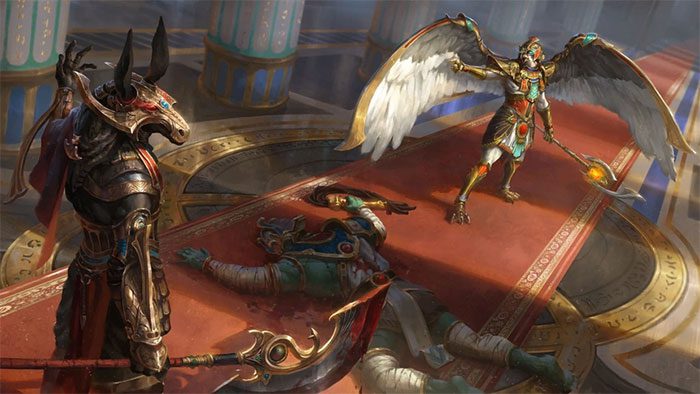
Seth and Osiris are two gods that played significant roles in the lives of ancient Egyptians. These Egyptian gods are the children of the earth god Geb and the sky goddess Nut.
All the gods were unaware that the chest was designed to fit only Osiris. Encouraged by the crowd, Osiris attempted to lie down in the chest. However, Seth quickly closed and locked it, then covered the chest with molten lead. Ultimately, he threw the chest containing Osiris into the Nile River.
After Osiris’s death, Seth took control of Egypt alongside his wife, who was also his sister, Nephthys. Osiris’s wife, Isis, was devastated by her husband’s death and wept for many days.
Later, she and her sister Nephthys found Osiris’s body and brought it back to Egypt to help him resurrect. However, Seth stole the body, cut it into 14 pieces, and hid them in various locations. Eventually, Isis managed to find the pieces of Osiris’s body from all over the world and buried them properly.
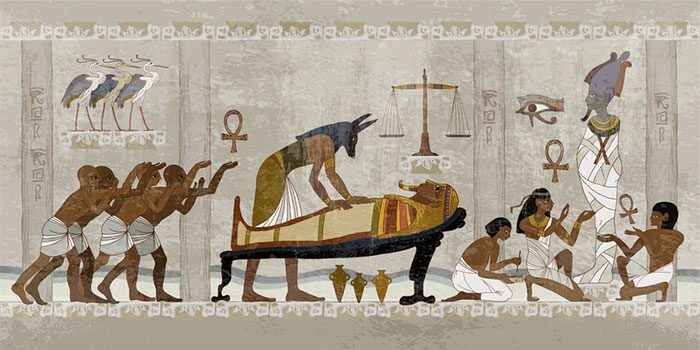
Osiris is the firstborn of Geb and Nut. He ruled Egypt and had a happy marriage with his sister, the goddess Isis.
Time passed until Horus, the descendant of Osiris, grew up and defeated Seth, avenging his father and inheriting the throne. This god excavated the pieces of his father’s body from various locations, reassembling them and mummifying them.
With the help of other gods, Horus resurrected his father, but Osiris’s resurrection occurred in the underworld. In another realm, Osiris became the lord of the underworld and was responsible for judging the dead. This mythological story was passed down through folklore, and later, it was trusted by the Egyptian pharaohs, who believed that they were aided by the gods in life and could still rule their land after death. Hence, every Egyptian pharaoh was mummified after death.
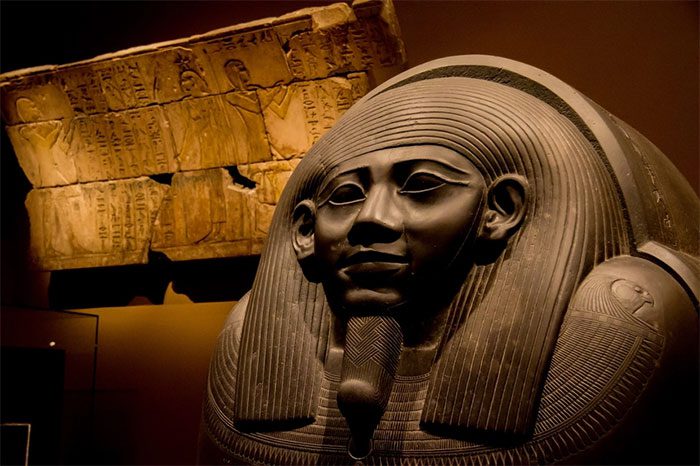
Later, Osiris became the ruler of the underworld.
How Are Mummies Created?
The preservation of mummies for an extended period is primarily due to the effective prevention of decomposition and decay. Decomposition is caused by the action of microorganisms, enzymes, insects, and animals on the corpse. Therefore, to create a mummy, it is necessary to eliminate as many of these factors as possible or create an unfavorable environment for their activity.
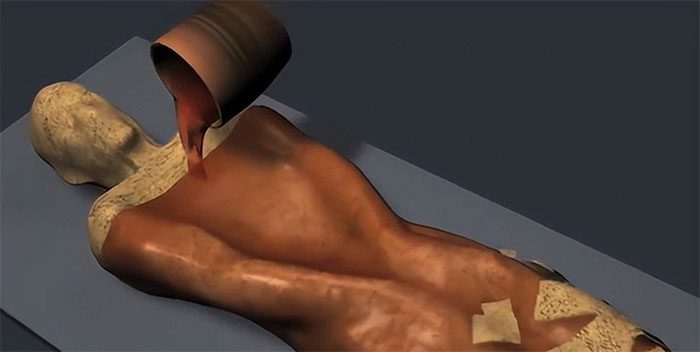
Mummification began around 2600 BC, and initially, only pharaohs – the rulers of the kingdom – were allowed to be mummified. About 600 years later, this notion changed, and common people were also permitted to be mummified and placed valuable items in their own tombs.
Artificial mummification involves carrying out a series of artificial treatments on a corpse to reduce moisture, sterilize, remove internal organs, apply fragrances, cover with resin, and wrap in linen to achieve mummification and preservation.
The ancient Egyptians applied this method, and their mummification process roughly consisted of the following steps:
Step 1: Remove the internal organs and brain. This is the first and most crucial step in the mummification process. Since the internal organs and brain are the most perishable parts of the corpse, if not removed promptly, the entire body may decay. These organs, including the liver, lungs, stomach, and intestines, are cleaned, dehydrated, coated with resin, wrapped in cloth, and placed in special jars. There are typically four jars representing four protective gods.
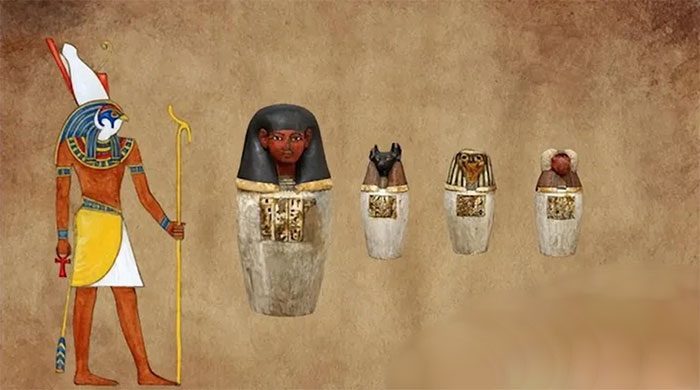
Four jars representing the protective gods. The human-headed god Imsety is responsible for protecting the liver. The jackal-headed god Duamutef is responsible for protecting the stomach. The baboon-headed god Hapi is responsible for protecting the lungs. The bird-headed god Qebehsenuef is responsible for protecting the intestines.
Step 2: Soak in natron. This is the most time-consuming step in the mummification process. Natron is a solution of salt and sodium bicarbonate that draws moisture and fat from the body, causing it to dry and harden.
Thus, after removing the internal organs and brain, the body is placed in a large container and covered with natron. This process typically lasts about 40 days, during which the body continuously loses weight and becomes as hard as wood. During this time, those performing the mummification will frequently check the condition of the corpse, and if any signs of decay are detected, they will be treated with additional natron or other chemicals. This step effectively draws moisture and fat from the corpse, causing it to dry and harden, thus preventing the invasion and activity of microorganisms and enzymes.
Step 3: This is the most expensive step in the mummification process. After soaking in natron, the corpse is removed from the container, washed with clean water, and then coated with various fragrances and resins. These fragrances and resins not only enhance the scent and appearance of the corpse but also prevent insects and bacteria from invading. These fragrances and resins are usually imported from afar and are very costly, accessible only to the wealthy.
This step creates a protective layer on the surface of the body that prevents moisture and oxygen from entering while inhibiting or killing microorganisms and enzymes. Additionally, some fragrances and resins possess antibacterial and disinfectant properties.
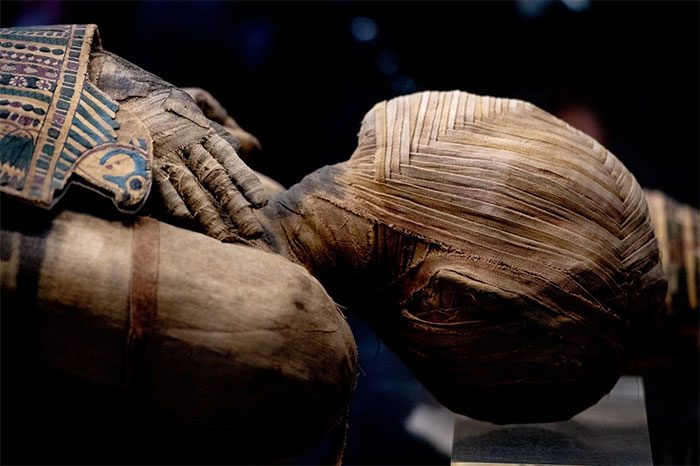
Typically, the mummification process lasts about 70 days. The ancient Egyptians believed that each individual possessed a soul. Even after death, a part of a person’s soul would remain connected to the body. Therefore, preserving the corpse to retain the soul was extremely important to the Egyptians.
Step 4: Wrapping. This is the fourth step in the mummification process and also the most artistic step. After applying the fragrances and resins, the body is tightly wrapped in linen to form multiple layers of bandages. These strips of bandage are often hundreds of meters long and require the cooperation of many people to complete. During the wrapping process, amulets and jewelry are also inserted into the bandages to ensure the deceased’s safety and happiness in the afterlife. These amulets and jewelry are typically made from metal or precious stones, some bearing hieroglyphs or special patterns that represent various meanings.
Step 5: This is the final step in the mummification process. After wrapping, the mummy is complete. However, before being placed in the tomb, a series of religious rituals must be performed to awaken the soul and senses of the deceased.
Then, the mummy is placed in a finely crafted coffin, usually made of wood or metal, and adorned with colorful images and inscriptions. Some wealthy individuals even had multiple coffins nested within each other for added protection and aesthetics. This step can provide an additional layer of protection for the outermost part of the body, ensuring safety, dignity, and preventing the body from being stolen or decayed.
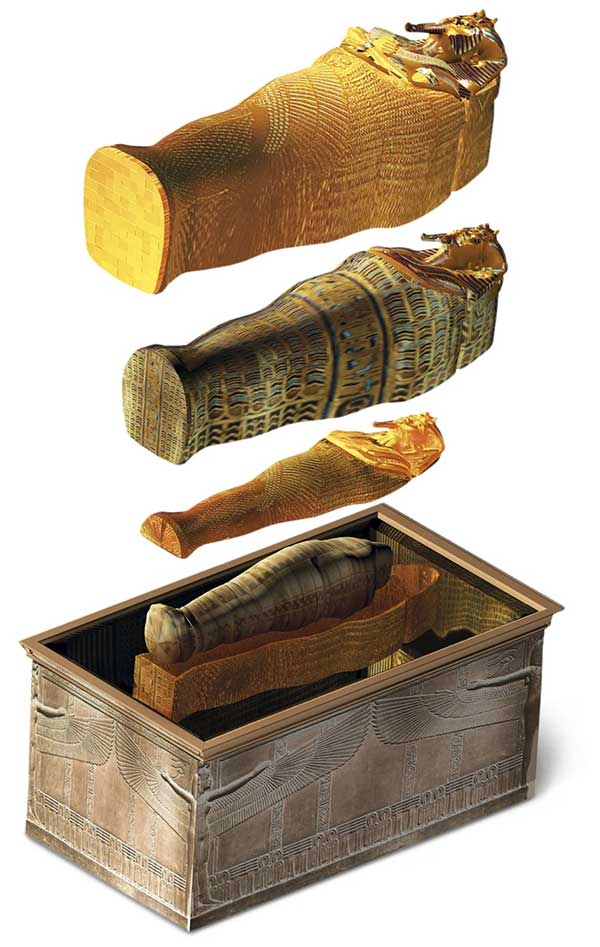
Today, archaeologists and experts use X-rays to study ancient Egyptian mummies. With modern techniques, scientists have discovered nerves, blood vessels in the fingernails, various layers of skin, and even fat cells still intact.
Although mummies are often shrouded in mystery, the ancient practice of mummification primarily aimed to ensure a journey to the afterlife and even to serve rulers. However, it cannot be denied that mummification truly reflects the intelligence of ancient civilizations; in a certain way, it has also propelled the advancement of human medicine.


















































